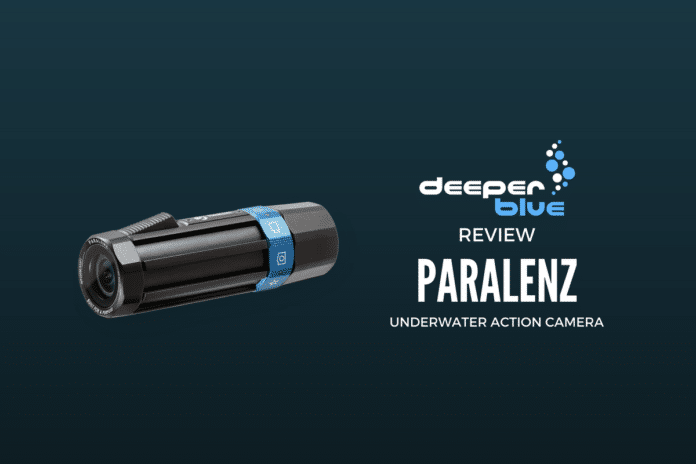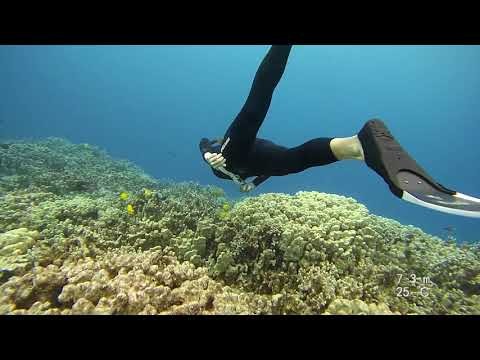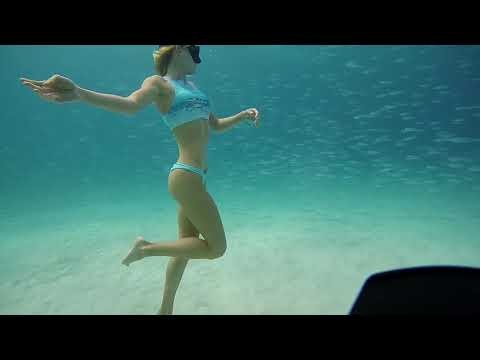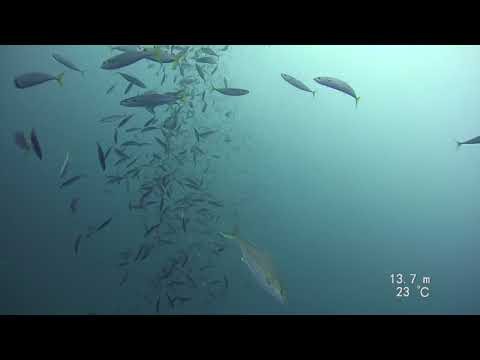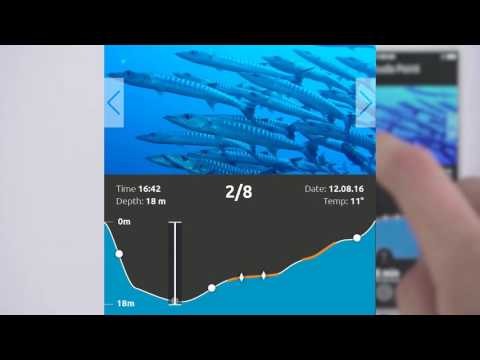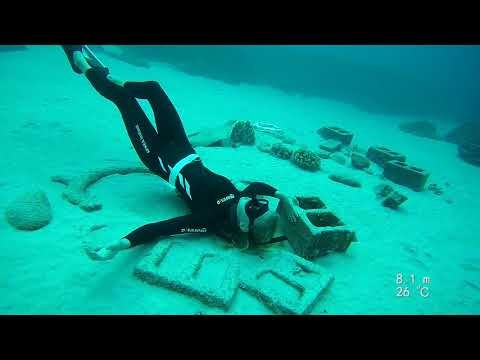“Paralenz: Built For A Purpose”
A deserved slogan since the Paralenz may just be the most well-thought out and advanced design for an underwater action camera. What other cameras, of any kind, has a depth sensor? Or compensates color with depth? The Paralenz can automatically start and stop recording when diving, with a recording time of over 3 hours, to a maximum depth of 200m/656ft!
But the Paralenz, born from a crowd-funding campaign only just over a year ago, is still negotiating a number of growing pains in the form of imperfect execution of admirable features and general glitchiness, which is continually improved with frequent firmware updates. This should not be such a surprise to anyone familiar with the interesting history of the company, whose business model included enlisting a large cohort of underwater enthusiasts (250 individuals from 38 countries) to serve as dedicated testers of preliminary and refined versions of the Paralenz through its final development. The Paralenz is, therefore, still maturing through user feedback and constant refinement as planned by the company, in spite of the camera being made available to the general public for many months already now.
How close is the current version of the underwater enthusiast’s “wet dream” of an action camera touted by the company? I am reporting my experience with a test unit over several weeks in the waters of my residence of Kona, Hawai’i with the latest firmware (as of testing) at v1.3.2.
Introduction
I first heard about the Paralenz through the AIDA Freediving group on Facebook. Several freediving celebrities attended DEMA in November 2017 and reported the debut of a promising new action camera specially designed for underwater use with specs that would be of particular interest to depth competition organizers, for which there are formidable constraints such as >100m depth rating and extended recording time. But in my cursory overview of the Paralenz, the feature which stopped me in my tracks was “DCC” – Depth Color Correction. Having been a dedicated DSLR + housing underwater shooter (*with only ambient light) for over 10 years now, I am heavily dependent on the advanced color correction capabilities of shooting in RAW format, a feature historically only available with DSLRs and with photos only, not video. But this advanced capability comes with a productivity penalty: the slightest change in depth of the camera requires adjustment of the white balance as appropriate for optimal colors, which is very time-consuming if processing many images per shoot (ask Daan Verhoeven why he’s sprouting gray hairs already). “If only there was a housing which incorporated a depth sensor that could communicate with the camera”, I constantly reflected, knowing that such a feature would be one of the most radical developments in underwater photography. It was only a matter of time before some keen product developers, such as those at Paralenz, brought such a practical idea to market, which could even adjust white balance continuously during the recording of video, something which no other camera, action cam or otherwise, I’m aware can do. Considering that the majority of underwater enthusiasts now rely only on action cams for their convenience and relative affordability, and don’t bother going to the trouble of using artificial lighting, the Paralenz’s depth-controlled, automatic color correction capability should be raising the eyebrows of most all underwater enthusiasts in spite of how many underwater-capable action cams have come before.
While I am no contributor to National Geographic, I do consider myself a more ‘professional’ user, so I evaluated the Paralenz rather critically. As most readers, I have experienced many generations of GoPro and watched as the action cam niche founder/trailblazer has been steadily bridging the gap to DSLRs. I also figured out how to use the advanced capabilities of Photoshop to nearly close this gap, facilitated by the ‘professional’ modes provided in the last few generations of GoPro. As excited as I was to endorse the novel features of the Paralenz, I also needed to make sure they covered their bases in the way of general features so I can maintain the image quality I expect when working with modern action cams.
First Impressions
Design
Join a few other divers with the Paralenz strapped to your wrist and you’ll quickly be asked: “What did you bring a torch for?” The Paralenz smartly shares the same design as underwater flashlights with their screw-on end cap, which drastically reduces the O-ring surface area (correlated with flooding risk) compared to action cams with a conventional back door. The “military-grade” aluminum construction of the compact, cylinder-shaped body conveys strength and reliability; indeed, Paralenz demonstrated that their product can survive the real world-relevant “car roll over” test. The minority of underwater action cam users who have needed to bring their GoPros deeper than 60m, or simply wanted a more trustworthy housing than the plastic stock one, have heretofore had to shell out as much as the price tag on the Paralenz just for any of a handful of aftermarket housings designed for this purpose. After unscrewing the rear cap for access to the charging and miniSD card slots, just make sure to screw it back on without blundering on the threading or failing to observe a large hair crossing all three of the O-rings and your Paralenz will presumably never meet a water-logged fate.

Control
“What about the control buttons? How can they work so deep?” you ask? Paralenz’s brilliant solution was to consolidate all control into two magnetic switches. A rotating circular switch selects between modes, while another trigger switch does the rest through short and long presses – browses through and selects options in menus, captures stills, and controls video recording. Due to Paralenz’s founders hailing from Denmark, they kept their cold-water comrades in mind, claiming that they compared among several sizes and shapes of the unit and trigger to find a solution that actually works with gloved hands, formerly thwarted by the conventional buttons of action cam housings. In this novel control system another intelligent feature was imparted — ”haptic feedback”: the Paralenz confirms mode/menu selections and media capture with very noticeable vibration pulses, just like our smartphones. No more straining your eyes to look for the blip of a tiny red light to confirm recording, nor starting clips with awkward selfies as you squint at the front display of older action cams. Furthermore, you can train yourself to operate the Paralenz without even having to look at it thanks to different vibration patterns assigned to the different modes, e.g., rotate the mode switch and one buzz = video mode, two buzzes = photo mode, etc.
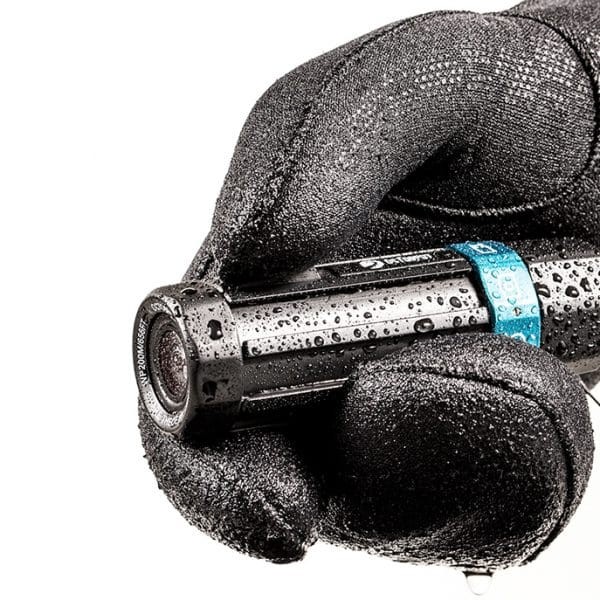
Media Parameters
This quick summary of the maximum video and photo parameters should satisfy all but the most spec-obnoxious users, who have been led by the industry to somehow expect IMAX theater-presentable resolution and 20x-slow motion capability out of tiny cameras:
- Max resolution: 4K (@30fps)
- Max frame rate: 200fps (@720p)
- Max photo resolution: 8MP
These are comparable to the parameters of the GoPro 5. Considering most of us use our action cams for presentation on mere social media, we should find the Paralenz’s capability of 1080p/100fps (4x slow motion capability) generous enough, and the sweet spot for most filming.
Industry-shaking Features
In addition to its outrageous depth rating, following are the features of the Paralenz which really set it apart from the other action cams, mostly completely novel features in the action cam market or even among all cameras.
Battery Life
Paralenz claims a 3.5 hour continuous recording time at 1080p/30, which surpasses the 3 hour limit of the most efficient action cams. I confirmed this capability, recording continuously for 3 hours and 57 minutes with my unit! (this was at comfortable room temperature; another user reported a 3:15 continuous record time at 18C). Most users would never need such recording time, but I can think of a few examples that I personally partake in:
- Bottom camera for freediving competition. In our competitions, we must leave a camera recording continuously at the bottom of the line (for lack of any way to control the camera from surface) to record necessary footage of athletes’ turns for judges to review. With the 1.5 – 2-hour battery life of most action cams, and a typical comp duration of 2.5 – 4 hours, one camera is usually never enough and a ‘camera break’ is usually inserted in the middle of a competition day just to swap out the camera for one with a fresh battery. With the Paralenz, smaller comps with <25 athletes could presumably get by with one camera and eliminate the necessity for the break. (Housings that accommodate GoPros with extra batteries also exist, but the Paralenz may be a more affordable one-stop-shop).
- I enjoy finding marine critters that are shy but still documenting their behavior by leaving our inconspicuous action cams near their dens and capturing long recordings.
Marathon recordings aside, the Paralenz’s action cam-leading battery life otherwise indicates that it should be able to endure long days of typical intermittent recording on a single charge. And if somehow you do manage to record for over three hours during a dive session, if you can hop out for about an hour this is all the time you need to recharge it with the USB-C cable.
Ah, but there is a significant trade-off for this extended battery endurance (which is probably the primary reason for it): the Paralenz bears no image-rendering LCD display as nearly all action cams have. But do you really need it? I have gone back and forth with LCD-assisted and blind shooting with action cams (as we all had to do with the first few GoPro generations), getting by with no LCD these days, and I believe one can calibrate his or her action cam aim with minimal practice. Almost all action cams have ultra-wide angle lenses, capturing so much of the scene regardless of how well you aim your camera, which is also why they perform so well underwater; the closer to the subject you can get the clearer the underwater image captured. The Paralenz shares the 120° field-of-view of GoPro, and the elongated cylinder shape of the Paralenz may provide a better sense of aim.
Minding their cold-water comrades, the battery of the Paralenz is reported to be insulated to minimize discharge in cold water.
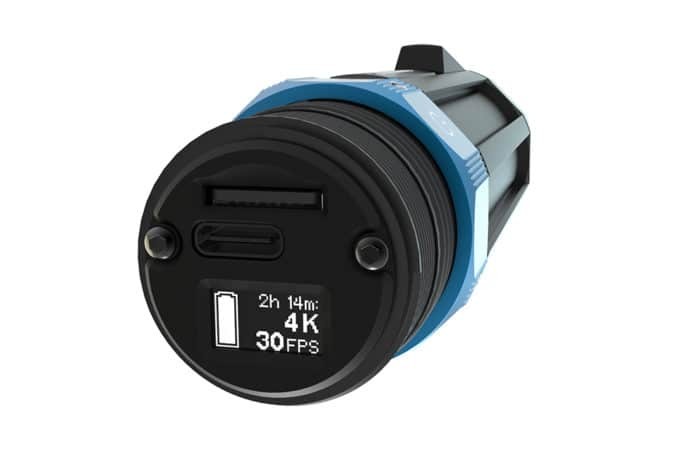
Depth Color Correction (DCC)
By far the most groundbreaking feature of the Paralenz is its feature of compensating color in real-time with depth underwater. For the uninitiated: due to the density of water the underwater realm attenuates light intensity and color tremendously, hence the dominance of blue-green hues under ambient light. The full-color spectrum is visible near the surface, but with increasing depth, certain wavelengths of light are attenuated by water, particularly the warmest colors, and ultimately all fade into the most enduring wavelength, blue. But our cameras can actually compensate for this, to a max of ~30m anyway, below which there just isn’t any color variation to recover under ambient light. This is accomplished the same way our cameras adjust hue for different temperatures of light above water (e.g., the warmth of light at sunset vs. the relative coolness of light in the shade at midday) – by adjusting the white balance parameter as images are recorded. A photographer can manually control this, even after the image has already been recorded, by saving images in RAW as opposed to JPEG format, which is one of the main reasons most advanced shooters always shoot in this format. But this post-capture editing capability has always only been possible with manual manipulation of each image in post-production, and only with still photos, not videos (which are just a collection of JPEGs with the white balance setting already baked in). I may spend several hours just going through and assigning white balance settings to the images from an underwater shoot if they were shot at varying depths (as is typical when freediving). Such a time-consuming shame, since the appropriate white balance setting at a particular depth, is easily predictable. If only my camera had a depth sensor…
Using its incorporated depth sensor, an industry first among action cams and I believe all cameras, the Paralenz can adjust white balance as appropriate for depth for both photos and videos. With videos, white balance is adjusted constantly with a change in depth, a feature which no other camera can hope to do, even among the highest-end, and which has long been needed by underwater ambient light-dependent shooters. The DCC mode allows a choice of two settings:
- BLUE – intended for clearer water as found in warmer locales, which is dominated by a cyan/blue hue
- GREEN – for colder waters or lakes with greater algae concentration, which accounts for the dominance of green hue.
DCC compensates the over-biased hue of ambient light in these settings, respectively, by introducing red-boosting correction in the BLUE mode, and magenta-boosting correction in the GREEN mode. These are the same colors of optical filters that were used in these underwater settings for the only former method of in-camera, real-time color correction, which is still inferior to Paralenz’s continuous white balance adjustment due to optical filters only compensating correctly for a particular depth. Artificial lights have been another solution: to record familiar colors underwater, even when deep, you can illuminate your subject/scene and have your camera’s white balance setting specified for the temperature of that light – but only within the limited ‘spotlight’ area the light beam covers. If shooting macro this works amazingly, but if shooting wide angle you have to accept an unnatural vignette of both light and color fall-off around the edges of your composition. Most freedivers value their swimming freedom underwater and would not dare consider wielding artificial lights dangling from long arms anyway. But Paralenz’s Depth Color Correction capability may even convince some SCUBA divers to start leaving the cumbersome, expensive artificial lights behind too.
Depth/Temperature Overlay
How cool would it be for your underwater videos to display your depth in real time? Again thanks to its incorporated depth sensor, Paralenz offers the optional function of overlaying real-time depth and temperature on photos and videos (continuously changing with depth in the video), which I expect most divers would be excited to implement to add interest and reference to their underwater media. I found the depth reading to be very accurate, within 0.5m of my gauges, and the Paralenz allows zeroing of depth at the surface for user-calibration.
More professional users have to consider whether to take advantage of this nifty function because it would limit scaling/cropping/stabilization capabilities in post-processing. But with the overlay option turned off the depth/temperature sensor info is actually still saved in log files on the memory card, which can allow adding the depth/temperature overlay to video in post (with control of placement, size, font).
Auto Record
The depth sensor allows yet another a novel function among all cameras – auto-record during dives, where the Paralenz automatically starts and stops recording when the depth sensor detects leaving and returning to surface (at a depth specified by the user). This must be targeted to the freediving users, particularly spearfishermen, who are well-acquainted with the issue of failing to record footage when too distracted to start recording, or when they thought they were recording but weren’t due to the difficulty of confirmation. This function worked 100% of the time for me, and it is possible to override Auto Record, starting or stopping recording as normal. Using the included mask mount and Auto Record, a user could completely ignore managing the camera during a session and come home with every single dive recorded.
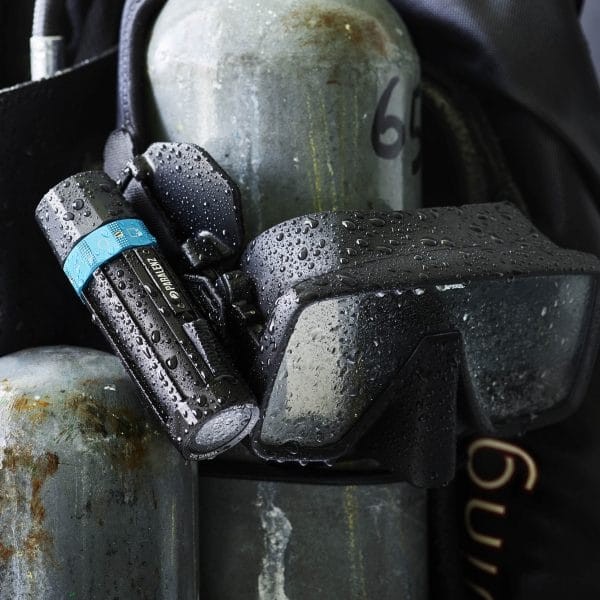
Areas of Improvement
Even GoPro, with all its experience, never accomplishes a release without fielding substantial complaint of unexpected or inconsistent behavior from early adopters. I am sympathetic that Paralenz, a company with far less staff and resources than many of the other well-established corporations producing action cams, in the midst of its debut release, must share in the challenge of admitting their product’s faults and working to rectify them. Most of my complaints were already well-identified by numerous users and acknowledged by Paralenz, which lends hope for these issues being improved in the near future since customer service is uncommonly impressive with Paralenz.
Inconsistent Behavior
Many users, including myself, have been experiencing varying levels of reliability. My test unit initially displayed unexpected behavior ~10% of the time (e.g., not recording video or saving photos when I thought it was, occasionally freezing and requiring a restart, reverting settings after selecting others). Such behavior is not uncommon among other action cams, including GoPro, which I’ve heard is mostly attributable to use of memory cards that don’t bear high enough data transfer rates. The manufacturers, of course, always ask us to use the latest/greatest/most expensive memory cards from SanDisk, including Paralenz, specifying that SanDisk ‘U3’ miniSD cards must be used. I found that every single one of mine was Class 10 ‘U1’, which still seemed to work fine with the Paralenz at my preferred video parameters of lower demand, up to 1080p100. After acquiring a newer SanDisk U3 card with “write speed of up to 90MB/s”, the performance of my unit wasn’t completely glitch-free, but I haven’t dealt with the more concerning issues like freezing or failure to record media anymore.
Connectivity
Have we entered the era of expecting a smartphone app for every action cam, camera, and small, interactive electronic device in general? For many action cam users, this is essential, for their lack of a computer on which to download media the ‘old-fashioned’ way or to be able to share the media fresh out of the brine.
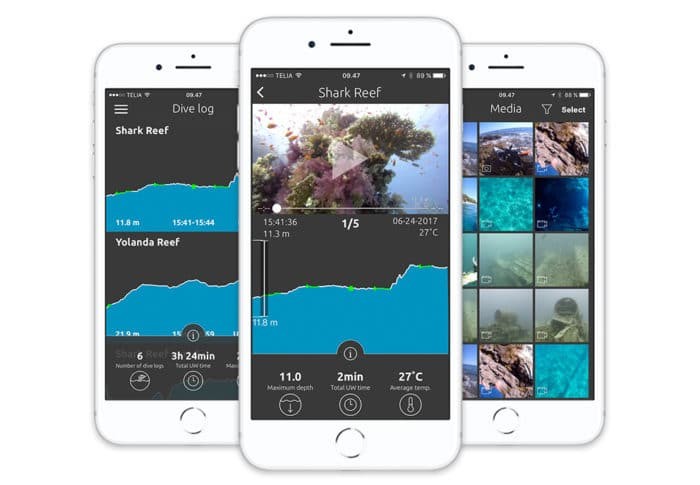
Paralenz obliged and developed its own app to serve as an interface for managing camera settings as well as downloading and sharing media, which looks sharp, but according to most users in the Paralenz FB group and my own experience, it does not function reliably enough yet. There seems to be an issue of dropped connection – downloads of media usually pause and require a restart of wifi/app. Paralenz has other ambitious goals for their app, such as dive logging and social media sharing (there is currently a race among several diving-related apps to become most popular for this), but most users’ disappointment with the app’s most important desired functionality, media transfer, continues to limit our endorsement. Therefore, gathering your media from the Paralenz pretty much requires dependence on a memory card reader and a computer, which is fine with me since this is standard procedure for myself and anyone else caring about media management and editing.
The app still has another utility – control of camera settings with a quicker and more visual interface than using the on-camera menus controlled by a single switch on the camera. But if you’re too disappointed about the app and don’t want to bother with it, note that all settings of the Paralenz can be accessed through the menus on the unit.
Photo Capability
“The Paralenz was designed with an emphasis on video over photo functionality”, Paralenz founding member Thomas Sønderby admitted to me. I agree that, when relying only on ambient light, underwater shooting constraints generally lend more to shooting video than stills to maximize impact (e.g., your blue, low-contrast still image of a shark in the distance will likely be a lot less captivating to your audience than a blue, low-contrast moving picture of the shark). But there must be some proportion of us who do care to shoot stills even with the reduced capture quality of most action cams. And then there is some really small proportion of us (including myself) who use our DSLRs when we care about image quality, but resort to bringing only an action cam when we can’t be bothered with the clunky DSLR or simply don’t anticipate seeing much but don’t want to risk being the butt of “pics or it didn’t happen” when something incredible does swim by.
Shooting photos don’t involve selecting nearly as many parameters as video, but with the Paralenz there is a complete absence of settings one can manipulate. GoPro, in contrast, allows adjusting: field-of-view, resolution, metering mode, max ISO, sharpening level, exposure compensation, and color profile, all of which can also be specified for video. The latter half of the parameters I mentioned are the ones that really matter for users savvy enough to bring action cam images into Photoshop for optimization, as I have been doing with GoPro JPEGs for some time to yield images that are deceptively comparable to DSLR quality. In spite of the lack of parameter control, the Paralenz outputs JPEGs that are moderately favorable for post-processing: low sharpening and contrast, but medium saturation. The extra warmth of the images when DCC is turned on also helps with restoring color contrast to underwater media.
I do sympathize with any action cam manufacturer’s requirement to compromise between providing enhanced control to the minority of more professional users vs. simplifying the functionality/sizes of menus for the masses. But at $600 the Paralenz is a “high-end” action cam, which, along with the DCC feature, should attract a substantial proportion of more professional users whom will desire the image control that other action cams provide. It should be possible to move more extensive menus and parameter selection to the app anyway.
Being able to shoot stills in RAW is rare among action cams, only introduced relatively recently in generation 5 of the GoPro. Considering my more photographic than videographics background, this was another of my most anticipated functions of the Paralenz. I was able to play with a few RAW images from mine, which I found sufficient in quality for manipulation, but my unit hasn’t recorded RAW versions dependably. Paralenz admits that their RAW photo implementation isn’t quite ready yet (it entailed downloading their PC-only software for conversion), so we’ll hope for a more user-friendly RAW implementation in the near future.
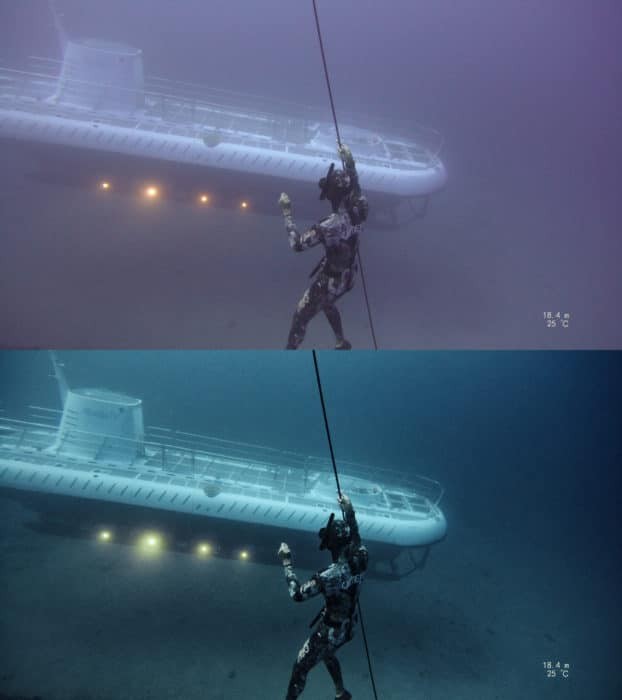
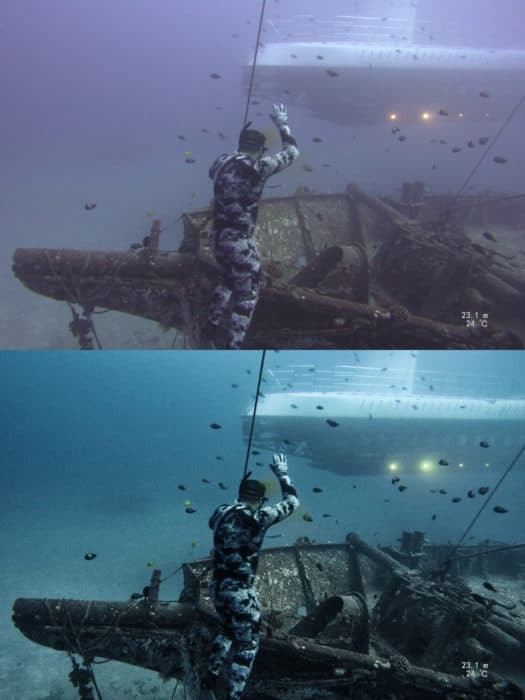
DCC Performance
The most recent Paralenz firmware update corrected a significant former issue of DCC producing an overly-warm image at >20m depth (dominated by magenta hue); it now looks great at depth. But one lingering issue with DCC is that it is overcorrecting at the surface, but in reverse – in DCC: BLUE mode, filming from the surface to 5m depth results in an unnaturally blue image (even with camera filming topside), which sorts itself out once deeper than 5m by transitioning to expected warmer colors beyond that depth. In its current state, I would not use DCC if I was filming at the surface (as while snorkeling) or to only shallow depth. I would instead rely on the standard Auto White Balance (AutoWB) mode, which would better yield appropriate colors in the very shallow water. If you are filming continuous clips from the surface to >5m depth (as many recreational freedivers and spearfishermen do, especially if taking advantage of the Paralenz’s Auto Record mode), and want to take advantage of DCC, you’d currently have to accept the strangely cold tone in your videos near and at the surface (or, better yet, just cut these out in editing and focus on the more interesting captures at depth). If, however, maintaining consistent color all the way to the surface is important, such as when filming freediving partners all the way to and above the surface (as when documenting sealing the deal on a PB depth dive or trophy fish recovery), you’re instead better off disabling DCC and relying on familiar AutoWB, yielding the same results you’ve been capturing with other action cams (i.e., desirable colors from surface to 5m, then with increasing depth an increasingly blue image that reaches constant saturation of blue).
Additional Observations
Mounting
Paralenz smartly chose to depend on the GoPro standard for mounts to allow mounting with all the accessories most action cam users already possess. But the included ‘click-mount’ brackets, which snap on to the ridged sides of Paralenz, are made of plastic and I found not reliable enough to prevent detachment of the Paralenz with typical impacts from underwater use. One could perhaps depend on this bracket with the insurance of also securing a leash, such as the one included, which I would strongly suggest employing lest there be an untold bounty of Paralenzes littering the seafloor. Fortunately, a more dependable ‘fixed-mount’ version – aluminum with securing bolt – is available for order from the Paralenz website.
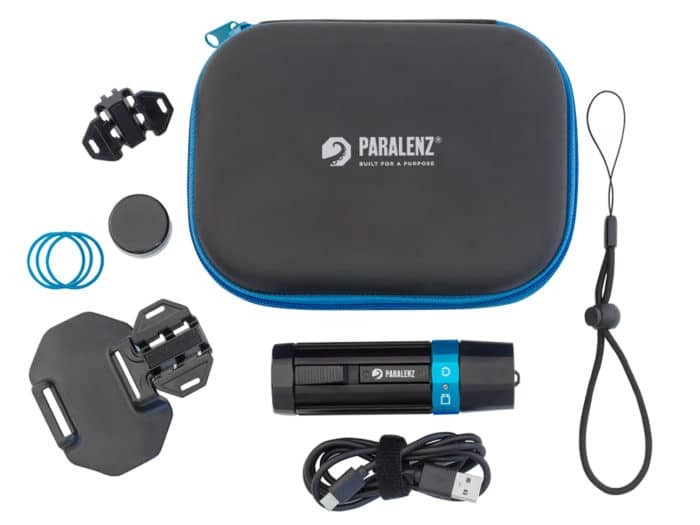
Image Stabilization
Electronic image stabilization was a feature added in the most recent firmware update, but in my own testing, I couldn’t notice any difference. No big deal since most of us in the know already practice one or more of the following strategies for minimizing camera shake in our action cam videos:
- Mount action cam on your head or any part of your body for much smoother video than gathered by your trembly hands.
- If using action cam for simultaneous video gathering while shooting stills with camera in the housing, mount action cam on housing for excellent stabilization.
- Conduct stabilization in post-processing software, which is facilitated by capturing video at a larger resolution than intended for publication (still the only utility of 2.7/4K resolutions for me), which will allow for the cropping necessary in processing.
Light Sensitivity
Paralenz claims on their website to offer the “most light-sensitive action camera” due to a reportedly “larger” sensor, but my testing did not corroborate this. My GoPro (in ProTune mode) revealed more detail under extremely low light. Photos from my Paralenz indicated a maximum ISO of 1600 (GoPro – 6400). When shooting underwater you shouldn’t expect much from any action cam under shadowy recesses, inside of wrecks/caves, near or after sunset, etc.; there is a lot less light to work with underwater compared to above, so as a general rule you should only depend on an action cam underwater with the sun in view from your shooting location. Under these circumstances the Paralenz performed fine.
Customer Service
Paralenz does patiently address all observed reliability issues by:
- Maintaining prompt customer service through website submissions or responding to user posts in the Paralenz user group on Facebook.
- Acknowledging user-observed issues and releasing firmware updates frequently, sometimes even adding novel functionality through such updates (e.g., Auto Record during dives was not among the original features, but is now one of Paralenz’s most premier features).
I would not expect the potential to get to interact directly with company founders/engineers with GoPro or most any other action cam manufacturers as Paralenz patrons get to enjoy. Paralenz’s start-up strategy of inviting hundreds of early adopters to serve as exclusive testers was brilliant for creating a strong sense of community among users right away, which continues to be evident through their Facebook user group.
Final Words
To summarize:
|
What I liked |
Needs improvement |
| · Incorporated depth sensor allows never-before-seen features in ANY camera for use underwater: Depth Color Correction, Auto Record during dives, depth/temperature overlay on media
· Extreme depth rating and solid aluminum construction · Far above average battery life · Video parameters up to most any modern action cam user’s expectations · Fantastic communication and customer service |
· General reliability could be closer to 100% (among firmware-controlled functionality only; no design criticisms)
· Smartphone app is not really usable for media management with current connectivity issues · Photo parameter control is lacking; RAW photo mode still in infancy · DCC still needs optimization; makes video strangely blue near surface |
As I composed this review I had to check on the validity of many of my praise-oriented statements about the Paralenz, such as whether it actually does have a much longer battery life than other action cams. In this process, I learned that there are a staggering number of other action cams out there now, which went unbeknownst to me because I have been content relying on my now dated GoPro 4 for some time now. So I expect it must be daunting to plan the marketing for and gamble on the success of an introduction to this hyper-competitive market. Luckily for Paralenz, the needs of underwater action cam users are in a few respects quite specific to the demands of use underwater, which should help Paralenz stand out amidst the sea of less aquatic action cams. Furthermore, the strong sense of community among divers should provide Paralenz with the greatest advertising – word of mouth – if they can establish their product as the dedicated diver’s incomparable choice for an action cam. Paralenz has already left a significant mark in history for bringing us the first camera, of any kind, with an incorporated depth sensor and the long-needed features that are bestowed by it. I look forward to continuing to depend on the Paralenz entirely for my underwater action cam needs. In spite of its hardened alloy exterior, its internals continues to evolve through the firmware enhancements, providing users with a product that is not stunted in its current form until the next release but actually growing better with every update.
The still-shaky firmware issues and features which need refinement are what remain standing in the way of Paralenz reaching the potential level of monopolistic among the dive community. Considering the unique and admirable development of Paralenz – financed by crowd-funding, tested primarily by early faithful users over the last year, and improved with frequent firmware updates – we should be sympathetic of its performance getting closer to the mark but not being fully there yet. Paralenz deserves recognition, under the circumstances of not being helmed by a large corporation, for even being able to rise above being just another GoPro imitator and engineering such novel functionality. We have seen similar modest beginnings with other diving products, and most important in such examples is customer service, which I’m happy to report Paralenz takes very seriously, most notably by having an open discussion with users through their Facebook group and directly addressing user inquiries in firmware updates. Hopefully we will see Paralenz quickly iron out the debut wrinkles and stabilize their already formidable presence, then perhaps continue to innovate brilliant or even market-shattering features specifically for the underwater enthusiast community.
Price
- US$599 / €649 (
- BUY NOW: https://www.paralenz.com
Technical Specs
| DEPTH RATING | 200M/656FT/21 ATM | |
| VIDEO RESOLUTION | 4k-30 FPS / 2.7k-60 FPS / 1080p-100 FPS / 720p-200 FPS | |
| EIS (electronic image stabilization) | Yes | |
| WHITE BALANCE | Auto, 3 different fixed WB and DCC | |
| BATTERY LIFE | LiPo – 1600 mAh / 3+ hrs recording (1080p – 30 fps) / 2+ hrs recording (4K – 30 fps) | |
| APP | Viewing / Sharing / Settings (iOS & Android) | |
| USABLE WITH GLOVES | Yes | |
| SHOCKPROOF | Yes | |
| PHOTO RESOLUTION | 8 MB | |
| WEIGHT | 155 g (5.5 oz) | |
| DIMENSIONS | 116 x 35 x 38 mm (4.5 x 1.4 x 1.5”) | |
| HOUSING | Military grade aluminum & polycarbonate | |
| VIDEO FORMAT | MOV – H.264 codec | |
| AUDIO RECORDING | Yes (internal microphone) | |
| PORT | USB-C (for fast charging) | |
| STORAGE | 64 GB or 128 GB Micro SD-card (Class: U3 or V30) – not included | |
| MOUNTS | Mask & universal mount included | |
| DIVE LOG VIDEO OVERLAY | Yes | |
| CONNECTIVITY | WiFi | |
| DISPLAY | 0.5″ OLED | |
| OPERATING TEMPERATURE | -20°C to 85°C / -4°F to 185°F / EVA padding (minimizing battery discharge in cold water) | |
| SENSORS | Pressure / Temperature | |

